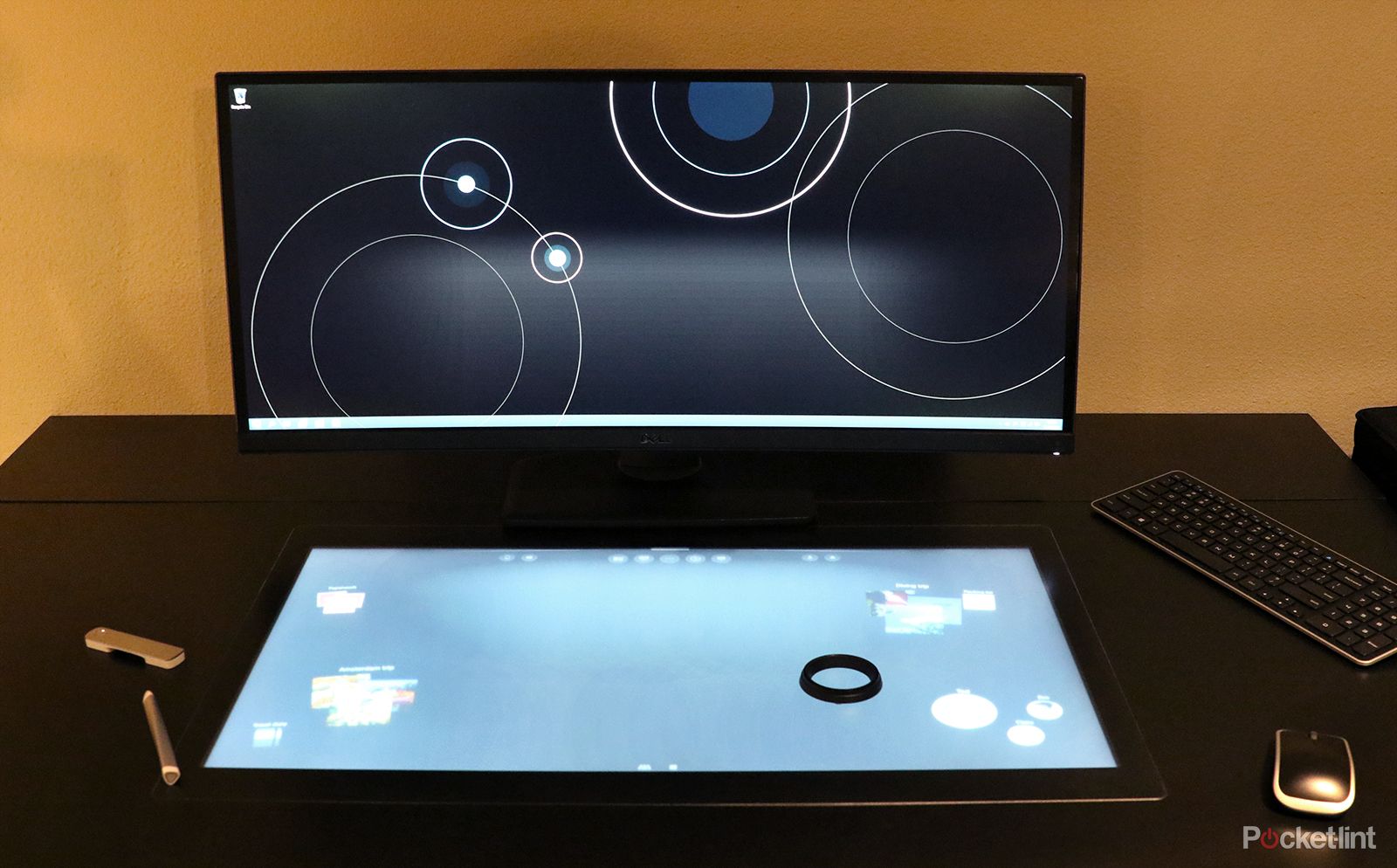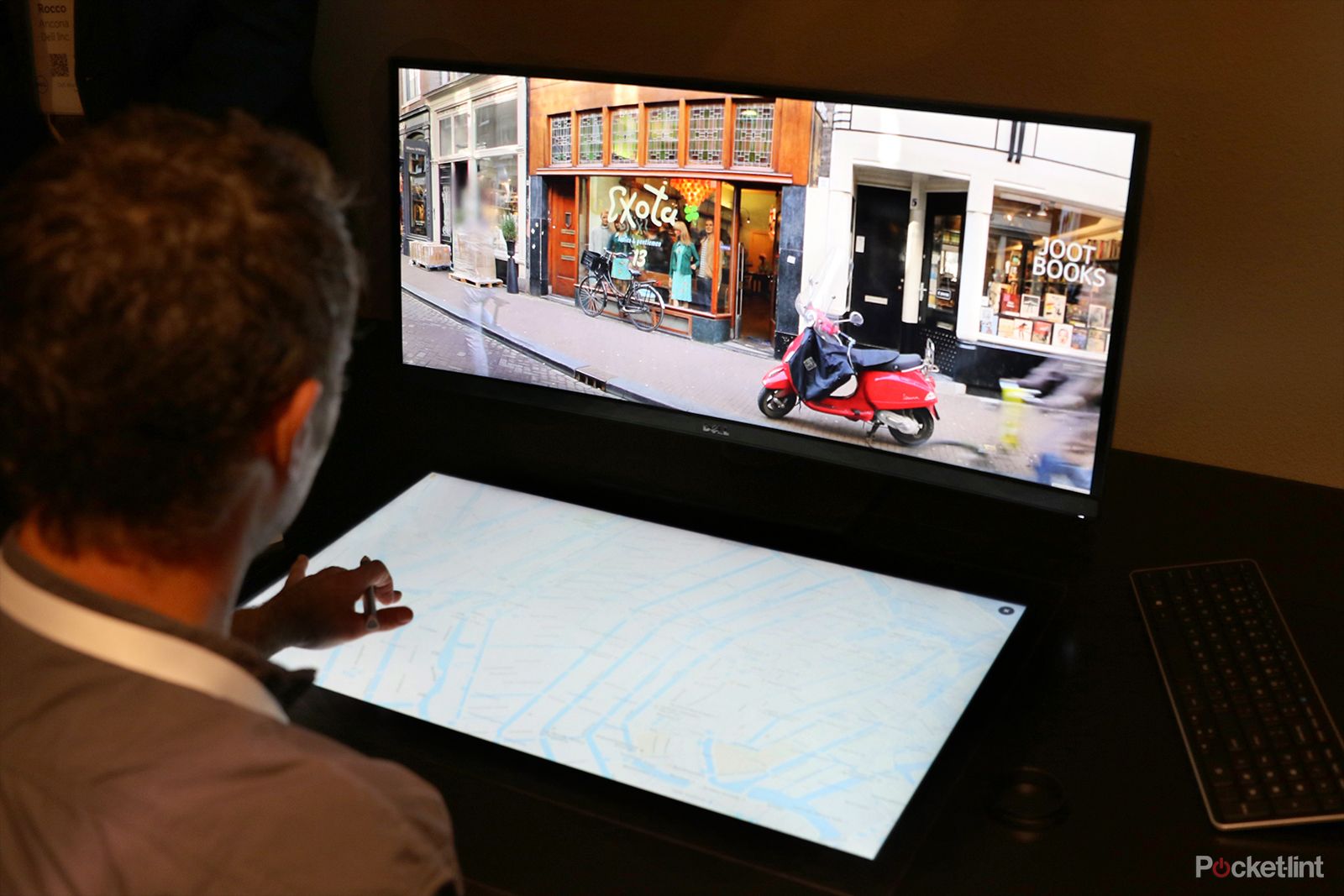We've all seen Tom Cruise chucking screens around with gesture-based control in the 2002 movie Minority Report. Although that probably doesn't reflect an average day at work for most of us in 2014, Dell's Smart Desk concept is designed to enhance professional workflow thanks to its multi-touch interactive desk and display experience. And you can pretend to be Tom Cruise if you want.
Behind closed doors at Dell World we were shown the concept in action: a 21:9 ultra-widescreen 29-inch Dell UltraSharp monitor encompassing the main screen (not the 27-inch 5K monitor announced earlier at the show), with a 27-inch touchscreen embedded into the desk in front.
This opens creative possibilities, with additional peripherals beyond just the keyboard and mouse designed to interact with the touch panel. Think of Microsoft's PixelSense, as first used in the 2012 Surface prototype, and you'll get a rough idea of what's possible (or if you're a Bjork fan then think Reactable), along with graphic tablet stylus input.
We were shown a circular controller accessory interact with the Smart Desk to adjust a brush size in Photoshop using one hand while a stylus in the other continued to input directly into the screen. Or in Google Maps the main screen presented street view, while the desk presented the top-down map view; a twist of the controller rotating the street view position in real-time.
Software is part of the key to all of this. The current Smart Desk user interface has a variety of integrated options but the variety of options are potentially endless, from contacts and notes that can be arranged in stacks, to notifications panels and multi desktop spaces. From gaming, to analytics, Photoshop to 3D imaging, there are all kinds of current and future possibilities to such a system.
However, as it stands Smart Desk is still very much a concept; a concoction of multiple pieces of hardware with one creative end goal in mind. The interactive screen doesn't have the colour, dynamic range or pressure sensitivity levels to be attractive to all, but there's potential with the right hardware implementation.


